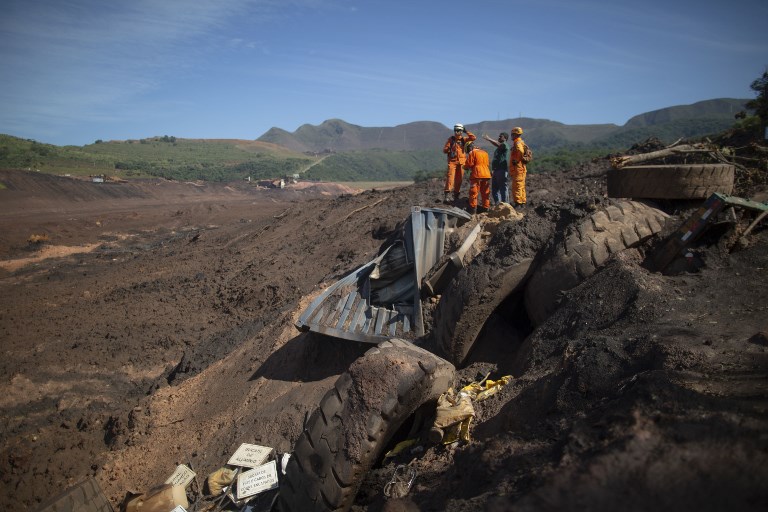A week after a dam storing mining waste collapsed in southeast Brazil, the human cost is clear, with 110 killed and 238 missing, presumed dead, but the environmental impact is still being evaluated.

Minas Gerais Firefighters keep on searching for victims at Corrego do Feijao where last January 25, a dam collapsed at an iron-ore mine belonging to Brazil's giant mining company Vale near the town of Brumadinho in the state of Minas Gerais in southeastern Brazil, on January 31, 2019. (Photo: AFP)
Authorities fear the mineral-laced slurry released by the collapse could eventually pollute the Sao Francisco River, the second-longest in Brazil, which hosts various species of fish and has many towns on its banks.
Daily tests carried out by Brazil's national water agency ANA in the Paraopeba tributary, muddied along 200 kilometers (120 miles) by the dam burst, show the presence of metals in the water have spiked to unhealthy levels.
Residents along the riverbanks have already said fish they relied on for food were floating to the surface, dead.
"Most of us here are very rural, riverside people, so we use the Paraopeba River to feed ourselves. It gives us fish, we use it to water our plants, and now we can't do this anymore, so many people have been affected by the dam breaking," one local, Leda de Oliveira, 31, told AFP.
- Worst industrial disaster -
The latest ANA results showed iron, magnesium and aluminum at worrying levels.
It added that, while trace levels of lead and mercury had initially spiked, they had since fallen to normal counts. Arsenic -- another impurity often found in iron ore waste -- was not a problem, according to the tests.
But those measured just water quality, and not the way the elements were being absorbed in sediment, food chains and the general ecosystem.
Experts say the real long-term effects of the dam break at the mine, located near the town of Brumadinho and owned by Brazilian mining giant Vale, may not be evident for years.
"Right now there are many unknowns -- how toxic is the waste? How mobile are the toxins? Will the waste move again? It is only when these things are known that we will really know how bad this will be," an expert in landslides, Professor David Petley at Britain's University of Sheffield, told AFP.
Immediate action, "very expensive if done properly," was needed to contain the pollution, he said, adding: "There is a lot of waste in the river. There is a risk that this now moves downstream in floods, or that toxins that it releases might move."
While Brumadinho is now considered Brazil's worst-ever industrial accident, given its high likely final death toll, a similar mining dam collapse three years earlier in the same region, near the town of Mariana, remains the country's worst environmental disaster. Its effects are still being measured today.
The dam near Mariana was part of a facility jointly owned by Vale. Nineteen people were killed. Pollution extended for 650 kilometers (400 miles) along a river, to the Atlantic Ocean.
The 60 million tons of waste it released were more than four times greater than the 13 million tons held back by the Brumadinho dam. Whole ecosystems affected by the Mariana sludge were killed off.
Both disasters resulted from ruptures of tailings dams -- reservoirs of detritus left over from the process of extracting iron ore. Such dams are the cheapest ways to store mining waste, but also the riskiest, as the two successive disasters showed.
Petley said it was to be hoped that measures to contain pollution were better now, but added that both disasters were "scandalous failures."


